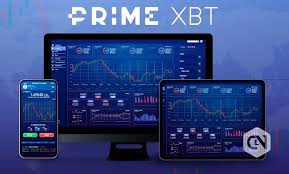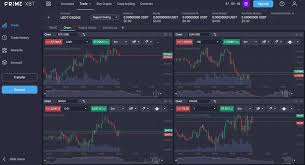
In the world of trading, understanding the intricacies of various order types is crucial for success. Among these, Limit and Market orders hold significant importance. This article will dive deep into the Limit vs Market PrimeXBT limit vs market PrimeXBT concepts, highlighting their differences, advantages, disadvantages, and effective use cases.
Understanding Market Orders
Market orders are the simplest and fastest way to execute a trade. When a trader places a market order, they are instructing their broker to buy or sell an asset at the current market price. The primary benefit of a market order is that it guarantees speed and execution. However, it does come with its own set of trade-offs.
Advantages of Market Orders
- Immediate Execution: Market orders are executed almost instantly at the best available price, making them ideal for traders who want to capitalize on short-term market movements.
- Simplicity: The process is straightforward—simply specify the amount you want to buy or sell, and the order executes.
- No Need for Price Speculation: Since you’re accepting the current market price, there’s no need to predict when the price will reach a specific level.

Disadvantages of Market Orders
- Slippage: In highly volatile markets, especially for assets with lower liquidity, the price at which the order is executed may differ from the expected price.
- No Price Control: Traders do not have control over the execution price, which can lead to unfavorable buying or selling prices.
Understanding Limit Orders
On the other hand, limit orders allow traders to specify the price at which they want to buy or sell an asset. A buy limit order is executed only when the asset’s price falls to the limit price or lower, while a sell limit order is executed only when the price rises to the limit price or higher. Limit orders offer more control but come with the potential for unexecuted trades.

Advantages of Limit Orders
- Price Control: Traders can specify the exact price at which they wish to buy or sell. This helps in maximizing profits and minimizing losses.
- No Slippage: Unlike market orders, limit orders are less susceptible to slippage. As long as the order can be filled at the specified price, execution will occur without price deviation.
- Strategic Entry and Exit: Traders can place limit orders at key support and resistance levels, allowing for more strategic positioning in the market.
Disadvantages of Limit Orders
- Execution Risk: A limit order might not be executed if the specified price is not reached. This can lead to missed trading opportunities, especially in fast-moving markets.
- Delayed Execution: Traders may have to wait for a while, or the order may never execute if the market does not reach the limit price.
When to Use Market Orders vs. Limit Orders
Deciding between a market order and a limit order largely depends on trading strategy and current market conditions:
Market Orders are Best When:
- You prioritize speed and are willing to accept the current market price.
- The market is highly liquid, reducing the chances of slippage significantly.
- You are day trading or executing short-term trades where price fluctuations are vital.
Limit Orders are Best When:
- You want more control over the price at which you enter or exit a position.
- You’re trading in a volatile market where price swings can be significant.
- You are looking for specific entry or exit points based on technical analysis.
Case Study: Using Limit and Market Orders Effectively
To illustrate the application of these order types, let’s consider a hypothetical example:
- A trader is observing the price of Bitcoin, currently trading at $50,000.
- They believe that it will dip to $48,000 before rallying up again. In this case, they might place a buy limit order at $48,000, targeting a strategic entry point.
- If Bitcoin suddenly breaks $51,000 and the trader is eager to participate, a market order would allow them to quickly enter at the current price to capitalize on momentum.
Conclusion
In summary, understanding the differences between limit and market orders on PrimeXBT is essential for traders looking to optimize their trading strategies. While market orders offer speed and simplicity, they lack price control, which could lead to unexpected slippage. Conversely, limit orders provide greater control, enabling traders to specify their desired entry and exit points but carry the risk of non-execution. Depending on the specific market conditions and individual trading goals, traders must evaluate which order type aligns best with their strategy to enhance their trading effectiveness on PrimeXBT.




